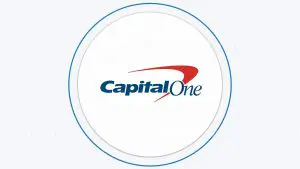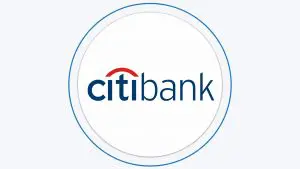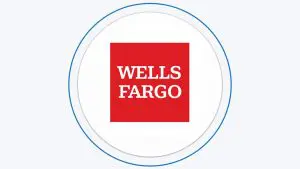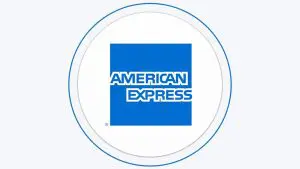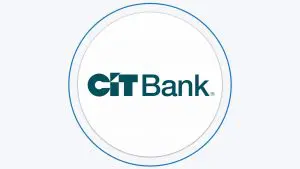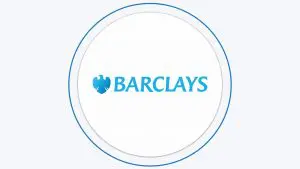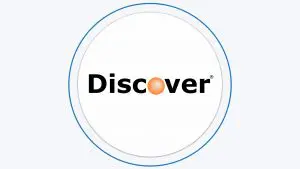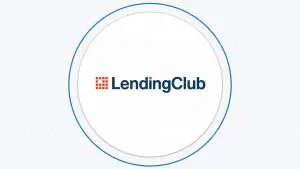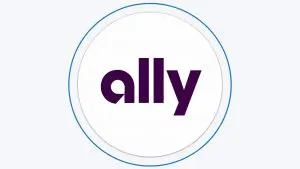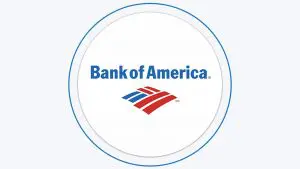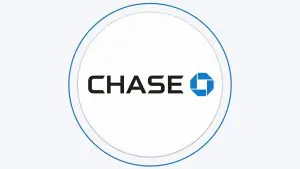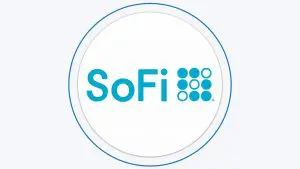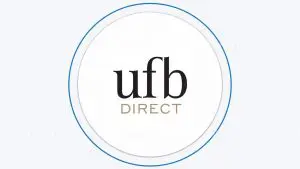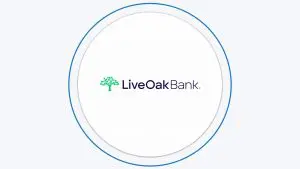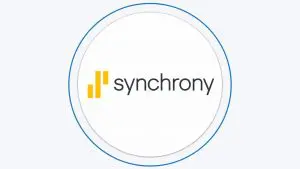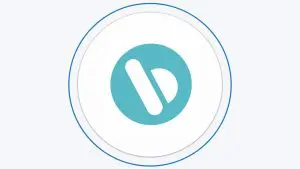Table Of Content
When we are young, we think the world belongs to us. But year after year we realize that one day we will be like our grandparents. Retirement will not seem as bleak as we might have expected if you have planned accordingly.
Don’t rely on pensions but rather take matters into your own hands. What can you do? You can open a retirement plan and make each month small contributions. What’s more, your employer can take part and also contribute to your account. What options do you have?
Well, the two most common types of retirement accounts are an IRA (Individual Retirement Plan) and a 401k. Even though both have the same mechanism and offer a great tax benefit, they have their differences as well. Thankfully, you don’t have to choose between the two because you can have them both if you wish.
Why You Should Need a Retirement Plan?
In this chart using FED Survey of Consumer Finances data, we can see that many people only start serious retirement planning after the age of 35. While under 35s have an average of $30,000 in retirement accounts, this increases significantly in the 35 to 44 age bracket. However, the increase is even more significant between the 45 to 54 age group and the 55 to 64 age group.
Here are four compelling reasons to start saving for retirement:
1. Relying On Social Security Or A Pension Is Risky
While retirement entitles you to low-cost medical coverage through Medicare and monthly Social Security benefit checks, they are unlikely to provide you with the comfortable retirement of your dreams. Your retirement funds will supplement what you receive from Social Security and serve as a safety net if Social Security and Medicare are ever reduced or eliminated.
Medicare and Social Security are intended to supplement, not replace, your retirement income. Meanwhile, pensions have mostly vanished, but they may no longer be sufficient to cover the lifestyle you've grown accustomed to.
2. The average life expectancy is increasing.
The first reason you should start thinking about retirement is that people are now living longer lives than ever before. A longer life means you'll need more retirement funds to live off of in the future. With the average American lifespan approaching 80 years old, it's clear that you'll need a substantial sum to live comfortably in retirement.
3. Investing in your future
It’s important to realize that you may indeed experience financial hardships in the future. People are frequently optimistic about their financial future, believing that things will improve in the coming years, but this is not something you can bank on.
Because your future is not guaranteed, retirement planning is essential, and once you have a plan in place, stick to it. If you get into trouble later in life, you'll have to fight the urge to dip into your retirement savings, even though it will be there as a safety net if you need it. Remember that there are sometimes penalties for withdrawing your retirement funds, and you should save them for your actual retirement.
4. Tax Advantages
Retirement planning is critical, and it should never be done without proper tax planning, because your tax benefits will vary greatly depending on your retirement plan. IRAs, 401ks, and other types of retirement plans provide a source of income in the future. Contributing to a retirement plan can often result in immediate tax benefits. Payroll deductions make it simple to contribute to a retirement plan.
Contributions are tax-free (except in the case of a Roth), and investment interest earned by the account is nontaxable until withdrawn. You can even transfer money from one account to another or keep the account if you change jobs.
How to Choose Between an IRA and a 401(k)?
Roth IRA is different than a traditional IRA and a 401k. They have a larger investment selection, and you can make qualified withdrawals before retirement. Some of the withdrawals are even tax-free. They also don’t have a required minimum distribution in retirement.
401ks on the other hand offer employer match for many companies. The contribution limit is pretty high, so you can put quite a bit of money into it at one time. The eligibility is not limited to income, anyone with a job can set up a 401k.
Before you start doing anything, you need to know how they function, what their differences and benefits are. Let’s get started.
What’s a 401k?
Simply said, this is a retirement plan which companies offer their employees. Other similar plans are 403b and 457. You can open a 401k plan only if your employer offers it. If that’s not the case, most probably you need to learn more about IRAs and use it.
In addition to that, some employers will contribute to your account the same amount of money you contribute; the so-called matched contribution. For instance, if you dedicate 5% of your salary to your 401k account, your employer can match this amount.
A great advantage of a 401k account is that you don’t have to pay taxes on the money for the time being. Only when you start withdrawing funds will you have to pay taxes.
However, there are certain limits to the amounts of tax-free money an employee can contribute. In 2015, this limit was $18,000. As of this year, the limit is increased to $18,500. These amounts might increase the following increase in the costs of living. If the person is over 50, they can contribute additional $6,000.
Benefits of a 401k Plan
401k plan has a couple of great benefits – here are the main things to consider:
- Withdraw Money
Usually, you don’t have the right to withdraw money from your retirement account before a certain age unless you want to pay a penalty for doing so. Sometimes an employee can take out some money for medical purposes.
If you have the medical bills and they are tax-deductible, you can qualify for this. In addition, disabled people can also make free of charge withdrawals.
- Easy Contributions
The amounts of money you would like to contribute will be taken from your paycheck. This is an easy and simple process without your having to make any payments.
- Matching Contributions
Sometimes companies make the so-called matching contributions to an employee 401k. This amount can be up to 6% of the employee’s annual salary. Depending on the company, this percentage can go even higher. This, on the other hand, will lead to higher returns on your account.
- Higher Contribution Limit
Keep in mind that these are the perfect conditions. Often, employers might impose contribution limits regardless of how much the government permits you to save. For instance, your employer limits your contributions to 15 of your salary which is $60,000 per year. This makes only $9,000 annual pre-tax contribution.
- Investment
401k plans offer their owners investment options as well. You can choose from a wide range of investments. Some of the companies offer the employees to invest in the company stock at a lower price.
- Borrow From It
Yep, that’s good news. You can use your 401k account to take out a loan. If you give back the money you have borrowed, you will not be penalized
What’s an IRA?
IRA stands for Individual Retirement Plan, and unlike a 401k plan which is provided only by employers, you can have an IRA as an individual. Anyone who is under 70 can have an IRA , there are no limits.
There are many types of IRA but two main types are Traditional and Roth. When it comes to paying taxes, they have some differences. A traditional IRA offers tax-deductible contributions, while a Roth IRA contributions are not. If you have a traditional IRA, you are free of taxes on capital gains, dividends, interest and rents.
Both IRA accounts have limits to the amount of money you can contribute per year. As of 2018, this amount is $5,500 and if you are over 50 – $6,500. In addition, you may not be able to qualify since there are some requirements regarding the annual income. If you are single, the gross income should not exceed $120, 000. If you are a family, the combined gross income should be below $189,000.
Benefits of IRAs
What are the advantages of IRAs over 401k? Let’s take a look.
- A Wide Range Of Investments
Both 401k and IRAs offer an investment option to their holders. According to a Plan Sponsor Council of America survey, 401k accounts offer up to 19 mutual funds. Unlike it, IRAs offer a lot more than that – up to 200.
For instance, Fidelity offers almost 200 mutual funds, while T.Rower Price has in their pocket around 100. Some companies, including Fidelity, can also provide you with the opportunity to invest in mutual funds offered by other companies. That makes the numbers increase to several thousand different funds.
- Low Costs And Expenses
If we have to compare a 401k with an IRA, definitely the latter beats it when it comes to price. A 2012 survey carried out by the Investment Company institute revealed that each investor owning a 401k had to pay a $6,30 fee for $1,000 invested in a fund. That’s pretty high compared to IRAs which offer a no-load mutual fund investment.
If you have a 401k, you will also have to pay additional fees and charges which will eat away your profits.
- Free Withdrawals
That’s tricky when you have a retirement plan. According to rules, you cannot withdraw money unless you have turned 59 and a half. If you do so, you have to pay, a penalty which is usually 10%. In addition, you will have to pay taxes on the money and won’t be able to benefit from the pre-tax advantages.
Despite this, there are some conditions that allow you to distribute money without having to pay a penalty. These are applicable only to IRAs!One of the specific exceptions is when a first-time homebuyer needs up to $10,000 for a down payment. In addition, IRAs give you the chance to withdraw free-of-charge money for educational purposes.
Which One Is For You?
Now you know what a 401k and an IRA are. You know how the work and their advantages. The main difference between them since they both are retirement accounts is that one of the is offered only through an employer.
If you work for a company that gives you the chance to have a 401k, maybe you should accept the offer. Not only are the limits of 401k higher but also the employer might contribute additional money to your account. This will make sure your money grows at a higher rate.
In case the company you work for doesn’t offer 401k or doesn’t make matching contributions, you might consider an IRA. Furthermore, not all companies are willing to make matching contributions. This would seriously erode the potential of a 401k retirement plan.
If you are a young man who is at his height, most probably a Roth IRA will make sense.
When you are young and capable you can pay your taxes while they are still relatively and you can actually afford them. On the contrary, if you earn a lot of money at the time of contributions, perhaps it will be better to choose a traditional IRA. Why? Well, large amounts of money mean lots of taxes.
What Grows Faster 401K or IRA?
Many people opt to use a 401k because it’s what their bosses offer, and they have never heard of IRA. However, the assets in an IRA are currently growing quicker and have an edge on 401k for a few reasons.
If your company doesn’t have a 401k match program, you might want to consider going with an IRA because it will grow faster. However, your 401k will grow quicker if your employer has a match program where you will be getting double what you put in.
Additional Retirement Plans To Consider
When it comes to retirement savings plans, 55% of American adults save their money using a regular saving account, according to T. Rowe Price. 401(k) plan closely follows by a margin of 54% of the respondents.
Here are some additional retirement plans options to consider:
- Roth IRA – Individual Retirement Accounts (IRAs) are a subset of IRAs. You can contribute funds up to a certain amount if you qualify for a Roth plan, but contributions are taxed as income. The contributions are not deductible.
- SIMPLE IRA Retirement Account – SIMPLE is an acronym that stands for Savings Incentive Match Plan for Employees. A SIMPLE IRA is a type of traditional IRA that allows employers to make pretax contributions (not deductible). It also allows employees to contribute through payroll withholding or other means. Because an employer can only set up a SIMPLE IRA if they are unable to sponsor another retirement plan, these plans are best suited to small businesses.
- SEP Retirement Plan – A Simplified Employee Pension Plan is a traditional IRA that the employee owns but is set up by the employer to allow them to contribute and receive tax benefits for their contributions. Self-employed individuals can also set up a SEP Plan. Contributions made during the fiscal year are not tax deductible because they are made before taxes are calculated.
- 403(b) plan – A 403(b) plan is a tax-sheltered annuity (a series of regular payments made for a period of more than a year) offered to employees by non-profit organizations, public schools, and other tax-exempt organizations. It's similar to a 401(k), and distributions are taxed, but contributions are almost never deductible.
- 457(b) plan – A 457(b) plan is a type of deferred compensation plan that allows employees to contribute pre-tax through payroll deductions. It is only provided by state and local governments, as well as a few tax-exempt organizations. Distributions are subject to taxation.
- 401(a) plan – A 401(a) plan is a defined contribution plan (employers contribute a set amount) that is generally available to employees of the federal government, state governments, or Indian tribal governments, though private employers can also establish them. In most cases, distributions are taxed.
Final words
It’s never too early to think about the future, including the day when we retire. In my opinion, opening a retirement plan is very important since it guarantees less stressful and happier days as a senior.
The two most common ways to do so is by either opening a 401k or IRA account. Both have their benefits and drawbacks, and in the article they are outlined. The final decision is yours.
FAQs
Can You Roll a 401(k) Into an IRA Without Penalty?
There are almost always penalties and taxes when it comes to rolling a 401k into an IRA. Although there are ways, as mentioned above, that you can avoid some of the taxes or minimize them, you will almost always have to pay taxes of some kind.
Make sure the funds are deposited into the IRA within 60 days or you might face even more penalties associated with early withdrawals. Investing in the right places can make your money grow quicker though and allow you to possibly make the price of the taxes back.
Can You Lose Money in an IRA?
Since the IRA is a type of investment account, you can lose money depending on market highs and lows. However, it is still insured by the FDIC which means it’s protected up to $250,000. Most people find that their money is safe and protected in IRA accounts.
The risk is low and the IRA is considered a low-risk investment. Spreading your assets out though can protect your accounts and money even more.
What to do If your employer doesn’t offer a 401(k) match?
If your employer doesn’t offer a 401k match, you won’t get as much money into your retirement fund as other people. There are still ways you can beef up the account though to make sure you have more saved for retirement.
The best way is to contribute more money and add to a higher percentage. This will lower your taxable income as well. You can also open an IRA to help you put more money away from the future.
How to minimize taxes on 401k withdrawal?
Paying the taxes on your 401k withdrawal can take away a lot of money. You can try to avoid some of the taxes with the immediate taxes. You can choose to allocate the after-tax funds into your retirement plan to the Roth Ira and then the pre-tax funds into the traditional IRA.
You can also choose to split up the retirement money into two accounts. This will reduce the immediate tax impact and possibly save you some money. Seeing a tax attorney or accountant will help you make the right choice.
Should I convert traditional 401k to Roth ira?
It depends on your goals and the end plan you have in mind. Many people choose to roll over traditional 401k into a Roth IRA because they might have future earnings that will skyrocket or continue to rise over the years. Putting the money into a Roth IRA can ensure you have enough money for the future.
You shouldn’t convert money into a traditional 401k if you plan to withdraw money in the next 5 years. This could take away the purpose of saving money for the future.
How to Make a 401(k) and Roth IRA Work Together
The 401k and the IRA will be separate accounts with separate rules, but you can still put money away into both to have more money saved away for retirement. This will allow your savings to grow much faster and allow you to have more money for the future.
Having a 401k is a good idea because it will allow you to have some money tucked away that you already paid taxes on. You can always strategize your distributions as well to minimize the tax liability.

